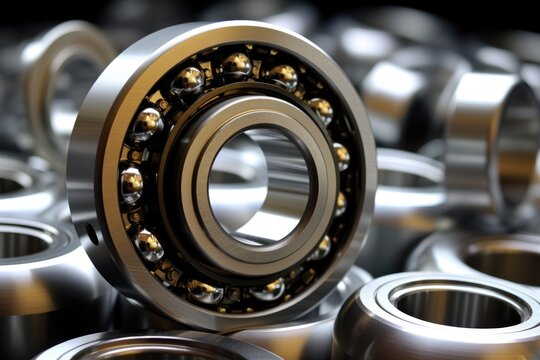Understanding Ball Bearings Every machine
Understanding Ball Bearings Every machine
Blog Article

Every machine operates on a delicate balance of parts that work in harmony, and among these parts, ball bearings are pivotal. For instance, did you know that the efficiency of a simple bicycle can significantly decrease if the ball bearings are not the right size? Selecting the correct ball bearing size is crucial not only for performance but also for longevity and safety. This is where ball bearing size charts come into play, guiding manufacturers and engineers alike in making informed decisions.
Understanding Ball Bearings
Ball bearings are crucial components used in various machinery and equipment, allowing for smooth rotation and reducing friction between moving parts. They consist of balls that are held in place by a cage, which promotes even distribution and minimizes wear. The size and type of ball bearing can dramatically affect the performance of the machinery it serves. For instance, a larger bearing can support heavier loads, while a smaller one is typically used in lighter applications. Understanding the specifications and applications of different sizes is essential for any engineer or technician.
The Importance of Size Charts
Using ball bearing size charts simplifies the selection process by providing essential dimensions, load ratings, and other specifications. This tool is invaluable when trying to match a specific application with the right bearing size. By consulting a detailed chart, engineers can quickly find the exact measurements they need, ensuring that the components they select will fit properly and perform optimally.
For example, a common issue arises when a technician must replace a bearing but lacks the original size specifications. In such cases, referring to a reliable size chart, such as https://www.aubearing.com/guide-to-ball-bearing-size-charts/, can provide the necessary information to avoid costly mistakes and downtime.
Factors to Consider When Selecting Bearings
When choosing ball bearings, several factors must be taken into account. Load capacity is paramount, as it determines how much weight the bearing can support without failing. Additionally, the speed rating is crucial; bearings must be able to handle the rotational speeds required by the application. Environmental conditions, such as exposure to moisture or dirt, also influence the type of bearing needed, as some materials are more suited to harsh conditions than others.
[IMAGE]
Types of Ball Bearings
There are various types of ball bearings, each designed for specific applications. For instance, deep groove ball bearings are versatile and widely used in electric motors, while angular contact bearings are better suited for high-speed applications requiring precision. Thrust ball bearings, on the other hand, are designed to handle axial loads. Understanding these differences is vital for selecting the right bearing for your project.
How to Read Size Charts
Reading a ball bearing size chart can initially seem daunting, but it becomes straightforward once you understand the terminology. Key metrics include the inner diameter (ID), outer diameter (OD), width, and load ratings. Familiarizing yourself with these terms will enable you to navigate the charts effectively and make informed choices. Furthermore, some charts include additional information such as material types and lubrication options, which can further guide your decision.
Conclusion
In summary, selecting the right ball bearing size is critical for the performance and longevity of machinery. Ball bearing size charts serve as indispensable tools, providing the necessary details to ensure compatibility and efficiency. By understanding the various factors that influence bearing selection and how to read size charts, engineers can enhance their work and avoid potential pitfalls. Whether in a bicycle or a complex industrial machine, the right ball bearing can make all the difference.
Report this page